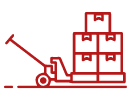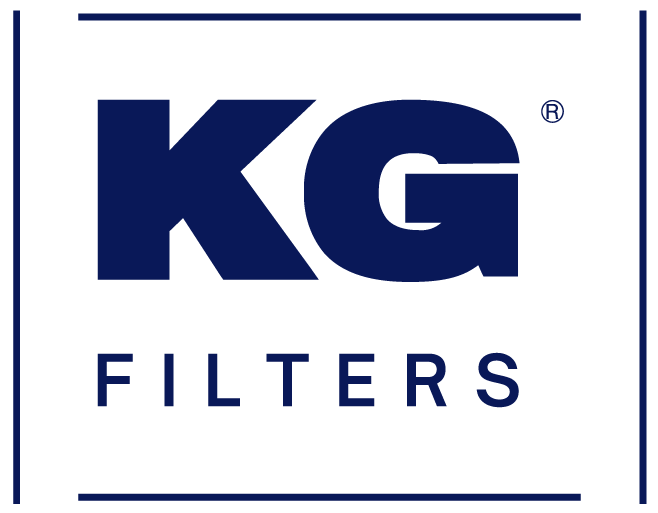Effective temperature control is a crucial factor that significantly impacts the performance and durability of bearings. The ability to maintain optimal operating conditions through proper temperature control can substantially enhance the service life of bearings and increase the overall efficiency of the equipment.
At KG International, we are committed to sharing our expert knowledge on temperature control for bearings. We are dedicated to assisting our customers in achieving success through informed decision-making and optimized operational practices.
The Impact of Temperature on Bearing Performance
Temperature conditions play a pivotal role in the performance of bearings. It is imperative to comprehend the ambient temperature of the application to select appropriate bearing materials, including seals, rings, rolling elements, and cages.
Furthermore, this knowledge informs the selection of grease type, bearing internal clearance, and shaft/housing fits. Failure to align the bearing design with the temperature conditions can lead to catastrophic failures.
Possible Issues with High Temperatures
- Lubricant viscosity drops, resulting in reduced fatigue life
- Raceway hardness diminishes, causing a decrease in fatigue life
- Seals dry out and crack, causing lubricant loss and contamination entry
- The cage/retainer weakens, potentially leading to a catastrophic failure
- Rings undergo permanent growth, causing changes in fits, shaft wear, bearing’s inability to float in the housing, and loss of bearing internal clearance
Potential Issues with Low Temperatures
- Lubricant viscosity increases, leading to higher torque and skidding
- Seals lose flexibility, resulting in seal failure, lubricant loss, and contamination entry
- The cage/retainer becomes brittle, potentially causing catastrophic failure
Knowing the expected temperature in the application and other factors such as required load and speed enable proper bearing design and selection.
Understanding the working environment of bearing assemblies is crucial at the beginning of any project. In these cases, experimentation is not a safe option. If working with a challenging design and unsure about the appropriate bearing selection, it is advisable to consult a bearing expert. It can save high costs in the long run by avoiding design failures and ensuring optimal bearing performance.
Temperature Control Techniques for Bearings
Maintaining optimal temperature is crucial for preventing premature failure and reduced efficiency. To achieve this, effective cooling strategies must be employed. Proper monitoring, maintenance, and the implementation of suitable cooling methods can significantly prolong bearing life and enhance equipment reliability. Several techniques can be used for cooling bearings, including:
- High-Temperature Bearing Material and Clearance Selection: Selecting the right bearing material for high-temperature applications is important for optimal performance. High-temperature steel or ceramic offer better heat resistance, ensuring enhanced durability and longevity. Bearings with greater internal clearance can efficiently adapt to dimensional changes caused by varying temperatures, resulting in smoother operation and reduced component stress.
- Optimal Lubrication Selection and Maintenance for Temperature Control: Lubricants with suitable thermal stability and viscosity, such as high-quality synthetic lubricants or specialized greases, can safeguard bearings from excessive heat and promote optimal performance. Regular inspections and upkeep of lubrication levels, help prevent excessive heat generation and ensure smooth bearing operation. Adhering to the manufacturer’s recommendations for lubrication intervals and application techniques guarantees effective lubrication management and prolongs bearing life.
- Effective Cooling Solutions and Airflow Optimization for Bearings: Heat sinks and external cooling systems: For certain applications, incorporating heat sinks or external cooling systems may be required to effectively dissipate heat from bearing assemblies. These cooling solutions assist in maintaining optimal operating temperatures and safeguard bearings from excessive heat. Ventilation and airflow optimization: Regular inspections and maintenance of ventilation systems contribute to efficient temperature control and prolonged bearing life.
- Temperature Monitoring and Preventive Maintenance for Bearings: Temperature sensors and monitoring devices: Employing temperature sensors and monitoring devices enables tracking of bearing temperatures, allowing the identification of potential issues before they worsen. Scheduled inspections and preventive maintenance: Regular inspections and applying preventive maintenance practices aid in the early detection of potential temperature-related problems, enabling corrective actions to be taken before bearing failure occurs.
The Benefits of Effective Temperature Control for Bearings
Implementing effective temperature control techniques can provide numerous benefits for bearings, including:
- Increased lifespan: Proper temperature control can help reduce wear and tear on the bearings, which can extend their lifespan.
- Improved performance: Bearings that are operating at the correct temperature will operate more smoothly, with less friction and better lubrication. This can lead to improved machine performance and reduced energy consumption.
- Reduced downtime: Overheating can cause bearings to fail prematurely, leading to costly downtime for repairs. Effective temperature control can help prevent overheating and minimize the risk of unexpected breakdowns.
- Lower maintenance costs: Effective temperature control also reduces maintenance costs over the lifetime of the machine by reducing the risk of premature failure and minimizing downtime
- Improved safety: Overheating bearings can pose a safety risk, as they can cause fires or other hazards. By maintaining proper temperature control, operators can minimize the risk of accidents and ensure a safe working environment
Wrap Up
The industries can significantly improve equipment efficiency and lower operating expenses by adopting effective temperature control techniques such as precise bearing selection, lubrication management, cooling methods, regular monitoring, and maintenance.
KG International is committed to imparting professional knowledge on temperature control for bearings, enabling businesses to optimize equipment efficiency and minimize operating costs. We offer a broad range of high-quality bearings along with unwavering support and guidance, ensuring that our customers receive comprehensive assistance in implementing effective temperature control techniques.
Contact us today to learn more about our products and services and leverage our expertise to excel in your industry.

























